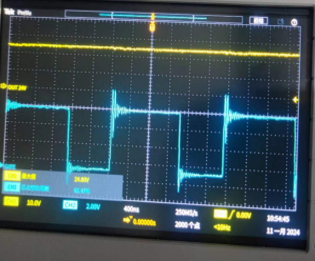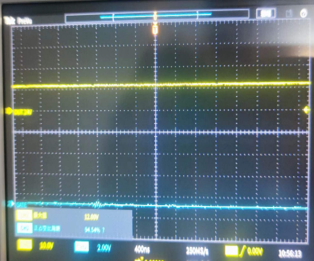- function role:LAN POE power supply
- function design:LM5161H chip,input power 12V boost output 24V
- issue description:
1.power on supply input 12V power, the function can output 24V.
as below: picture 1 (out:24V, Gate PWM:11.13%)
2.alter 30s, the inductor L1 and N-MOS VQ1 is burning hot. the output 24V will drop to 12V.
as below: picture 2(out:24V, Gate PWM:64.47%) and pictue 3(out:12V, Gate PWM:0%)




